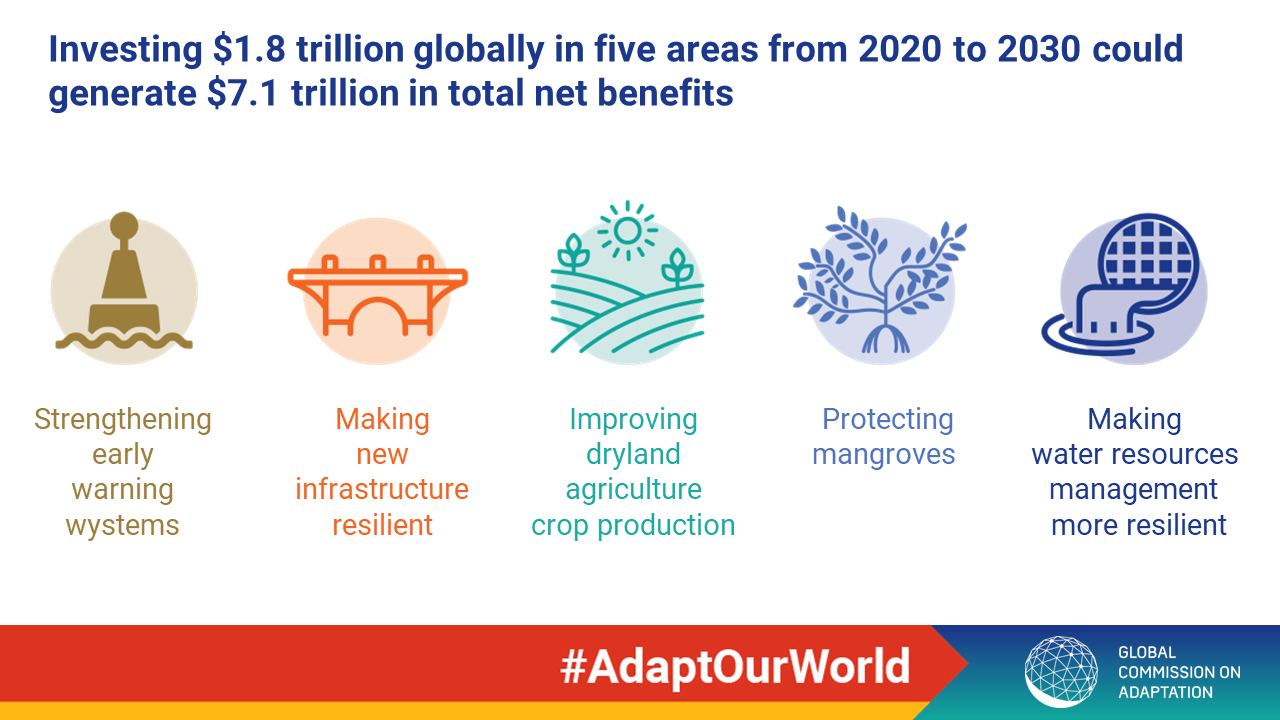Scotland has an ambitious plan to prepare for climate change. This is what it looks like
The Scottish government has outlined 170 policies for 2019-2024 designed to mitigate the effects of climate change and weather-proof the economy for the future.
D
espite not being one of the countries people immediately think about when it comes to the ravages of climate change, Scotland has staked a place at the forefront of climate-adaptation strategy with an ambitious programme of measures.
The Scottish Climate Change Adaptation Programme 2019-2014, the second of its kind, includes a deadline for net-zero carbon emissions by 2045, moving ahead of the 80% reduction by 2050 originally promised by the country’s 2009 Climate Change Act. This is also five years ahead of the targets set by the rest of the UK.
The proposal was backed up by recently passed laws setting out what environment secretary Roseanna Cunningham called “the most stringent framework of statutory targets of any country in the world” – laws that require a 70% cut to emissions by 2030 and 90% by 2040.
Launching the plan, Cunningham said: “Scotland is a world-leader in climate change mitigation. Our emissions have almost halved since 1990 and our contribution to climate change will end completely within a generation.
“But even if global emissions were to stop today, extreme weather and sea level rises would still continue to worsen for decades to come. We must expect and plan for threats to food and water supplies, health, biodiversity, transport, businesses, public services and Scotland’s iconic historic environment.
Tangible outcomes
Scotland faces numerous challenges as its climate changes, including an estimated 8cm sea level rise by 2030, heatwaves like that experienced in 2018 every other summer by 2050, and more frequent extreme-weather events.
The new programme sets out more than 170 policies – up from the 150 offered by its predecessor – to not just mitigate the effects of flooding, coastal erosion and extreme-weather events, but to shape Scotland’s overall future in an era of climate change. Produced partly through consultations with the public, the programme is aligned with the UN’s Sustainable Development Goals.
“[It] builds stronger links between our mitigation and adaptation work and focuses on tangible outcomes, helping to deliver wider objectives for our society and economy,” said Cunningham. “In line with our response to the global climate emergency, it will deliver a step change in securing the benefits of a climate-ready, resilient Scotland for current and future generations.”
The programme is broken down into seven “Outcomes”: communities, vulnerable populations, economy, infrastructure, natural environment, coastal environment and international networks.

Adapting for the future
The second strand furthers the country’s reputation for socially progressive policies by emphasizing the heightened effects of climate change on socially disadvantaged populations, such as the elderly. It envisages, for example, provisions to ensure care infrastructure adapts to a new climate.
The third strand outlines the need to protect and integrate Scotland’s natural resources into a fully sustainable economy. Careful forest management, for example, is necessary to combat the likes of dothistroma needle blight, a fungus affecting Caledonian pinewoods that is now thriving in the country’s warmer springs.
The final strand stresses the importance of international cooperation in the fight against climate change, promising £10 million annually for schemes with four partner countries – Malawi, Rwanda, Zambia and Pakistan – through the International Development Fund.
The 2019-2024 measures aim to build on a decade of forward-thinking climate action ushered in by the 2009 act. Emissions are already down 50% from 1990, the baseline year set by the legislation.
Francesca Osowska, Chief Executive of Scottish Natural Heritage, said the plan “sets out a clear plan to keep our communities, businesses and assets resilient and adaptive for the future in the face of climate change.
“Expanding and enhancing our nature is an essential part of the solution to the global climate emergency, and the Dynamic Coast project is one fantastic example, demonstrating how action such as dune restoration and salt marsh expansion can help to improve erosion and flood protection and sequester carbon dioxide. Nature-based solutions such as these are crucial to adaptation in all of Scotland’s landscapes, whether that is increasing urban green spaces to help communities to be more resilient, creating better habitat for pollinators critical to rural businesses, or restoring rivers and wetlands to reduce flooding.”
Scotland’s climate-adaptation credentials will be on show when Glasgow – aiming to be carbon-neutral by 2030 – hosts the UN Climate Talks for 10 days in November next year.
The ideas presented in this article aim to inspire adaptation action – they are the views of the author and do not necessarily reflect those of the Global Center on Adaptation.